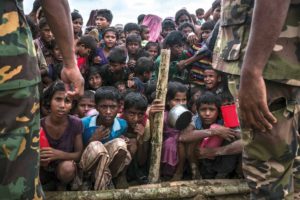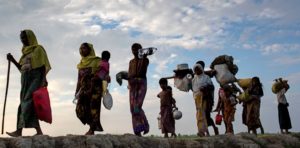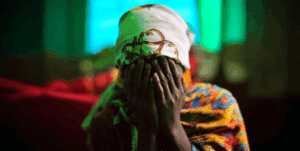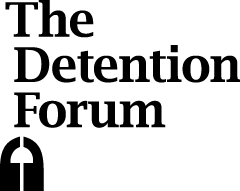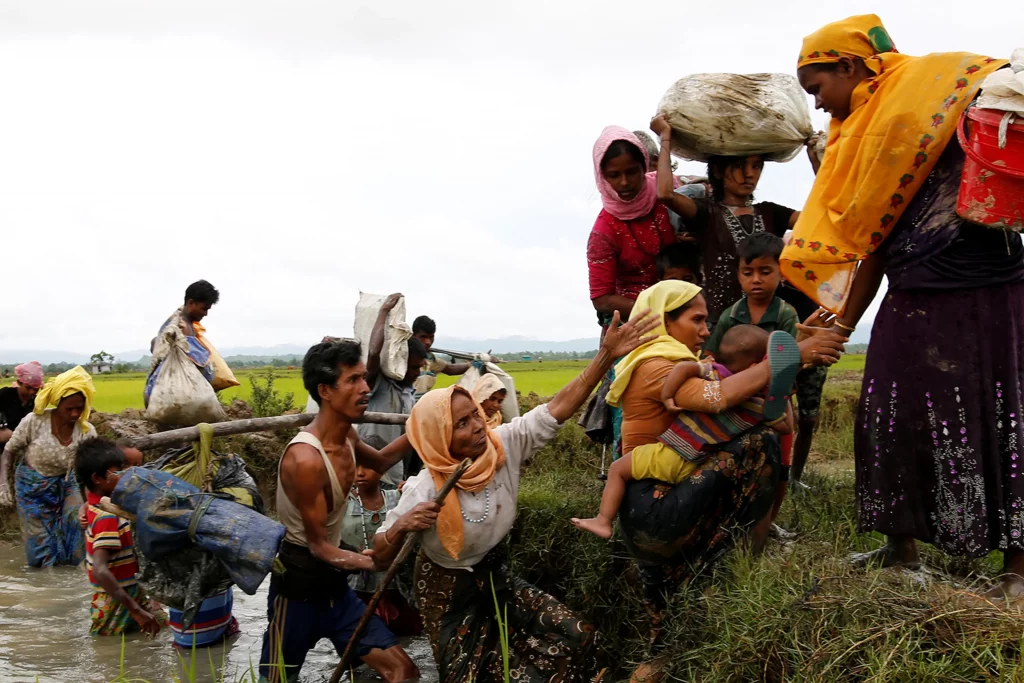
I’ve been studying the Rohingya refugee situation in Bangladesh since 2020. I’ve spoken to countless Rohingya refugees living in camps in Bangladesh. I’ve conducted research with Rohingya refugees and written with them. I’ve travelled to Bhasan Char twice, and those trips allowed me to gain a deeper sense of the situation there and the nature of challenges faced by refugees relocated to the island. So, what I’m speaking about today is based on five years of constant engagement with the Rohingya refugee situation in Bangladesh.
I’m going to discuss two key findings based on the research my colleagues and I have conducted at the Centre for Peace and Justice at BRAC University and the University of Oslo in Norway. Based on these two findings, I will discuss two alternative approaches or interconnected solutions. It’s undoubtedly going to be hard to make these alternative approaches a reality, but the fact that it’s an uphill battle shouldn’t be a reason to shy away from trying to alleviate the plight of the Rohingya people in Bangladesh.
Key Finding 1: A Limited ‘Right to Have Rights’
“With a limited ‘right to have rights,’ the status of over a million Rohingya refugees in Bangladesh is precarious.”
Let us, for a moment, think about the existing legal and political framework in Bangladesh. Bangladesh is not a party to the 1951 Refugee Convention or its 1967 Protocol, and it does not have a national refugee law. The majority of the Rohingya people do not have refugee status. In the absence of refugee status, their protection is governed by confidential Memoranda of Understanding (MOUs) between governments and UNHCR (to which the refugees have no access), by constitutional guarantees of basic rights, and by ad hoc policies.
This is why we borrow from Hannah Arendt and say that the Rohingya in Bangladesh live with what we call a “limited right to have rights.” This enables the Bangladesh government to respond to the plight of Rohingya refugees in an ad hoc manner, leaving them in a state of precarity, as demonstrated in their fragile access to education, livelihoods, and justice.
For example, refugees found outside designated camps have often been detained under the Foreigners Act of 1946. In practice, the justice system available to them is not through formal courts of law but through administrative officials in camps and informal systems of justice led by Rohingya armed groups and community leaders.
“The Rohingya in Bangladesh live under ad hoc governance — a system where protection depends on politics, not on rights.”
The Right to Education
During extensive fieldwork in Ukhiya and Bhasan Char, many of the Rohingya refugees who participated in Focus Group Discussions (FGDs) felt that the educational facilities in the camps existed only in name — that many were merely for “show.” Refugees expressed dissatisfaction with the quality of education provided by NGOs, with one Rohingya respondent pointing to low salaries for teachers, which resulted in a lack of qualified staff in schools run by INGOs and NGOs.
Key Finding 2: Livelihoods and the Right to Work
“Rohingya refugees in Bangladesh are not officially or legally allowed to work.”
This restriction stems from fears of exacerbating tensions with host communities and concerns that employment opportunities would encourage refugees to stay rather than return to Myanmar.
And yet, work happens. Refugees participate in the informal economy, often in exploitative conditions. Some are engaged by NGOs or UN agencies as “volunteers,” earning small stipends that provide a degree of dignity but fall far short of real self-reliance.
Let’s not forget that decades of marginalisation in Myanmar mean that many Rohingya also lack the formal education or vocational training needed to break into skilled professions in Bangladesh and beyond.
The result is a cycle of dependency: refugees survive on humanitarian aid, while the host state and communities feel the mounting pressure of limited resources.
Although not officially permitted to work, many refugees engage in informal labour outside the camps or in small businesses either refugee-run or in partnership with host community members. Refugees accessing the informal labour economy in the host community stay outside the camps for five to ten days straight.
It was a shared understanding between the refugees, Rohingya majhis (community leaders), and the police that refugee men would return to their shelters only after their work was complete and they had earned enough money.
When a 20-year-old Rohingya man working as a day labourer inside the camps was asked if he ever wanted to get an education, he said:
“I did want to, but I must eat. If I study, I can’t get by. And if I focus on getting by, I can’t study.”
Interestingly, while Rohingya refugees living on Bhasan Char are permitted to work, the lack of market integration with the mainland has severely limited sustainable livelihood opportunities on the island — leaving many feeling “disappointed and betrayed.”
Towards Solutions: Recommendations
This situation cannot continue indefinitely. To move beyond survival to dignity, two key steps are essential.
1. Adopt a National Refugee Law
Bangladesh should adopt a national refugee law. Such a law need not replicate the 1951 Convention word for word; rather, it should be rooted in the lived experiences of the Rohingya in Bangladesh and in the country’s own long history of hosting displaced populations.
Over the past two years, I was fortunate to lead a team of young, passionate researchers, and we prepared a comprehensive Model Law for refugees in Bangladesh, which emphasises access to livelihoods, education, justice, and movement, among other rights.
2. Recognise the Right to Work — and Go Beyond the Law
Here, the international community plays a vital role. Bangladesh alone cannot shoulder this responsibility. The compacts relating to Jordan and Ethiopia provide important precedents: Jordan issued work permits to Syrian refugees in exchange for foreign investment and trade preferences.
A similar Bangladesh Compact, backed by substantial international financing, could allow Rohingya refugees to contribute to the economy rather than be perceived as a burden.
“Shared responsibility must mean shared opportunity.”
We don’t have to call it the Bangladesh Compact — terminology can evolve — but the principle of partnership remains crucial.
Over the past year, due to political transitions, the situation has become even more challenging. When I first visited Bhasan Char in 2022, a Rohingya man told me:
“The easiest way to address my sadness is by letting me work.”
When it comes to searching for alternative approaches to the Rohingya situation in Bangladesh, it is still possible to move away from precarity towards meaningful protection.
We can still move away from exclusion to empowerment.
To achieve protection and empowerment, we must envision the value of enacting a domestic model law for refugees — one that dismantles the architecture of exclusion (which Shafiur bhai spoke about earlier) — and forge a compact with the international community that promotes greater responsibility-sharing.
“Protection without empowerment is unsustainable; empowerment without inclusion is impossible.”
Only then can the integration of the Rohingya people into Bangladesh be perceived — and realised — as a win-win for both the Rohingya and local communities.
This is a slightly revised version of the author’s presentation on the Workshop on Alternative Approaches to the Rohingya Refugee Situation (London, September 5, 2025).
About the author: Dr. M. Sanjeeb Hossain is a law scholar specialising in refugee rights at the Centre for Peace and Justice, BRAC University, and the Department of Criminology and Sociology of Law, University of Oslo.
The opinions expressed in this blog are those of the author and do not necessarily represent the views of United Against Inhumanity (UAI).
